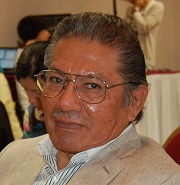Design
Design
Personality
Chart Properties
Your Cross represents the specific theme of your life. This cross embodies your unique potential & the lessons you're here to learn, providing a roadmap to fulfilling your life purpose.
We use the UTC birth time and date to do the calculations required to generate your Human Design chart.
Buy Tokens
Pay as you use, no expiry and no subscription required.Prompt Ideas
Get inspired with some epic prompt ideas.Carl Tanzler's Biography
German-American radiology technician, also known as Count Carl von Cosel, who developed an obsession for a young Cuban-American tuberculosis patient, Elena “Helen” Milagro de Hoyos (1909–1931), that carried on well after the disease had caused her death. In 1933, almost two years after her death, Tanzler removed Hoyos’ body from its tomb, and lived with the corpse at his home for seven years until its discovery by Hoyos’ relatives and authorities in 1940.
Tanzler emigrated to the United States in 1926, sailing from Rotterdam on 6 February 1926 to Havana, Cuba. From Cuba he settled in Zephyrhills, Florida, to where his sister had already emigrated, and was later joined by his wife and two daughters. Leaving his family behind in Zephyrhills in 1927, he took a job as a radiology technician at the U.S. Marine Hospital in Key West, Florida under the name Carl von Cosel.
During his childhood in Germany, and later while traveling briefly in Genoa, Italy, Tanzler claimed to have been visited by visions of a dead ancestor, Countess Anna Constantia von Cosel, who revealed the face of his true love, an exotic dark-haired woman, to him.
On 22 April 1930, while working at the Marine Hospital in Key West, Tanzler met Maria Elena “Helen” Milagro de Hoyos (31 July 1909 – 25 October 1931), a local Cuban-American woman who had been brought to the hospital by her mother for an examination. Tanzler immediately recognized her as the beautiful dark-haired woman that had been revealed to him in his earlier “visions.”
Hoyos was eventually diagnosed with tuberculosis, a typically fatal disease at the time, that eventually claimed the lives of almost all of her entire immediate family. Tanzler, with his self-professed medical knowledge, attempted to treat and cure Hoyos with a variety of medicines, as well as x-ray and electrical equipment, that were brought to the Hoyoses’ home. Tanzler showered Hoyos with gifts of jewelry and clothing, and allegedly professed his love to her, but no evidence has surfaced to show that any of his affection was reciprocated by Hoyos.
Hoyos died of tuberculosis at her parents’ home in Key West on 25 October 1931. Tanzler paid for her funeral, and commissioned the construction of an above ground mausoleum in the Key West Cemetery, which he visited almost every night.
One evening in April 1933, Tanzler crept through the cemetery where Hoyos was buried and removed her body from the mausoleum, carting it through the cemetery after dark on a toy wagon, and transporting it to his home.
Tanzler attached the corpse’s bones together with wire and coat hangers, and fitted the face with glass eyes. As the skin of the corpse decomposed, Tanzler replaced it with silk cloth soaked in wax and plaster of paris. He kept the body in his bed.
In October, 1940, Hoyos’s body was discovered and the authorities notified. Tanzler was arrested and detained, but the case was eventually dropped and he was released, as the statute of limitations for the crime had expired.
In 1944, Tanzler moved to Pasco County, Florida close to Zephyrhills, Florida, where he wrote an autobiography that appeared in the Pulp publication, Fantastic Adventures, in 1947. His home was near his wife Doris, who apparently helped to support Tanzler in his later years. Tanzler received United States citizenship in 1950 in Tampa. Separated from his obsession, Tanzler used a death mask to create a life-sized effigy of Hoyos, and lived with it until his death on 3 July 1952.
Link to Wikipedia biography
Your Cross represents the specific theme of your life. This cross embodies your unique potential & the lessons you're here to learn, providing a roadmap to fulfilling your life purpose.
We use the UTC birth time and date to do the calculations required to generate your Human Design chart.


Segundo Galicia Sánchez
6/2 Sacral Manifesting Generator

Jean de Gliniasty
1/3 Emotional - Solar Plexus Manifesting Generator

Chuan Leekpai
3/5 Emotional - Solar Plexus Manifesting GeneratorAnnabelle Euranie
6/3 Emotional - Solar Plexus Generator





